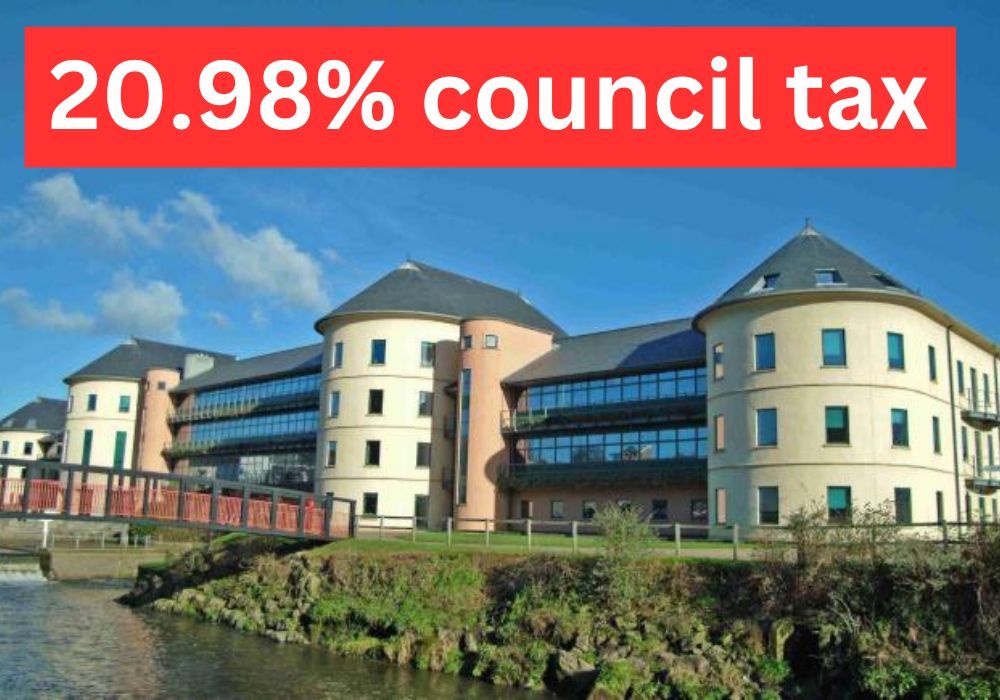Senior Pembrokeshire Councillors Expected to Call for 21% Council Tax Increase

Senior Pembrokeshire councillors are expected to call for council tax increase as high as 21 per cent next week against a backdrop of the council facing its worst-ever financial position.
Pembrokeshire is currently facing a projected funding gap of £31.9m, by far the largest funding gap ever seen by the council.
This figure is even bleaker in the next few years; the projected funding gap for the Medium Term Financial Plan 2024-25 to 2027-28 is £82.2m.
A report before Pembrokeshire County Council’s Cabinet, meeting on February 12 says: “This projected funding gap will need to be bridged through a combination of an increase in council tax, use of council tax premiums and budget savings.
“Any use of reserve funding will only be considered where there is a clear plan in place to reduce base budgets by the levels required for 2025-26 onwards and to replenish the reserve balances over the term of the Medium Term Financial Plan, in line with the Strategy for Holding and Utilising Reserves.”
In total, Pembrokeshire is facing financial pressures totalling £41.3m, partly offset by funding – some of which is yet to be fully confirmed – bringing that figure down to £31.9m.
Simple options to address this gap are to cut expenditure, which would require £31.9m in savings; increase funding through a council tax rise alone, which would need an eye-watering 42 per cent rise, or through a combination of the two, which is proposed.
Cabinet members are asked to recommend one of three options for a council tax increase, along with large budget savings.
The increases range from 16.31 per cent, 18.94 per cent, to a 20.98 per cent increase.
These increases would increase the annual council tax bill by £219.02, £254.34, and £281.73 respectively for the average Band D property.
Associated savings needed for the three levels would be £12.8m, £10.9m, and £9.3m.
A report for members stated: “Any Band D Council Tax increase below 16.31 per cent will have very significant impact, including statutory failure in some service areas and so is not considered to be a financially sustainable option.”
The report said options for a 15 and 12.5 per cent council tax increase were modelled, but “this would have resulted in very significant budget savings being required and some services no longer being able to meet their statutory requirements”.
One of the reasons for the financial situation in Pembrokeshire – and in neighbouring Ceredigion – is a lower-than-expected Provisional Local Government Settlement from Welsh Government.
Every year the Welsh Government allocates funding for each local authority, and for 2024-25 Pembrokeshire will only receive a 2.5 per cent increase in that funding against a 14.4 per cent increase in service costs.
This equates to £5.3m additional Aggregate External Finance (AEF) funding for Pembrokeshire County Council, £1.3m lower than assumptions of a 3.1 per cent increase.
This lower than-expected settlement is part of a general decline in central government support for councils, council Leader David Simpson has said.
“During the past decade, funding levels from UK Government to Welsh Government and on to councils have not kept pace with the ever-increasing pressures.
“Due to this, we have had to make significant budget savings of £96.7 million over this time, supported by your suggestions in our annual budget consultation. We have always endeavoured to minimise the impact to service users, especially the most vulnerable in our communities.”
Council Tax accounts for 26.05% of the council’s general funding, with more reliance on council tax funding due to AEF reductions during the austerity period whilst council tax increased.
Council tax accounted for only 18.4 per cent in 2013-14.
Pembrokeshire is also facing an “unprecedented” increase in demand for both adult and children’s social care that has added more than £23m in pressures.
In five years, children’s social care costs have risen from six per cent of the budget to 10.3 per cent.
Social care and education costs now make up 78 per cent of overall pressures with social care costs exceeding education costs for the first time this year, Council Leader David Simpson has said.
In 2024/25 the budget for social care will be more than all other services combined, excluding schools.
There has also been a huge increase in the number of people needing temporary accommodation, from 78 in March 2019 to 507 in March 2023, leading to a £1.145m pressure for 2024/25.
Another issue in Pembrokeshire has been historically low levels of council tax, the county still having the lowest rate in Wales, despite having increases of 12.5%, 9.92%, 5.00%, 3.75%, 5.00% and 7.50% since 2018-19.
The average Band D base council tax for Pembrokeshire is £1,342.86, compared to Ceredigion and Carmarthenshire at £1,553.60 and £1,490.97 respectively.
If the council had Ceredigion’s level of council tax for 2023-24, it would have had an additional £11.758m income and if it had Carmarthenshire’s it would have had an additional £8.264m.
Ceredigion County Council Cabinet’s has proposed a 13.9 er cent increase in council tax, which would take a Band D property to £1,769.55 per year; if Pembrokeshire increased its Band D rate to £1,769.55 it would generate an additional £23.902m.
The final decision on the council tax level – and any savings – will be made by full council when it sets the annual budget on March 7.
Neighbouring Ceredigion will make its final decision on February 29.
Spotted something? Got a story? Email News@News.Wales








